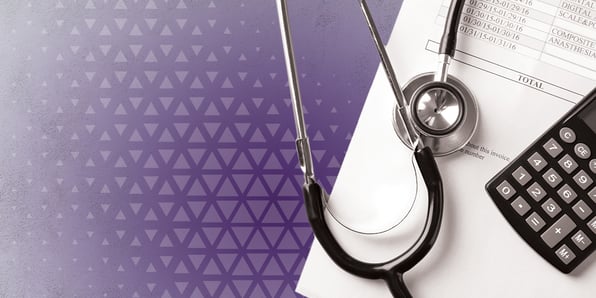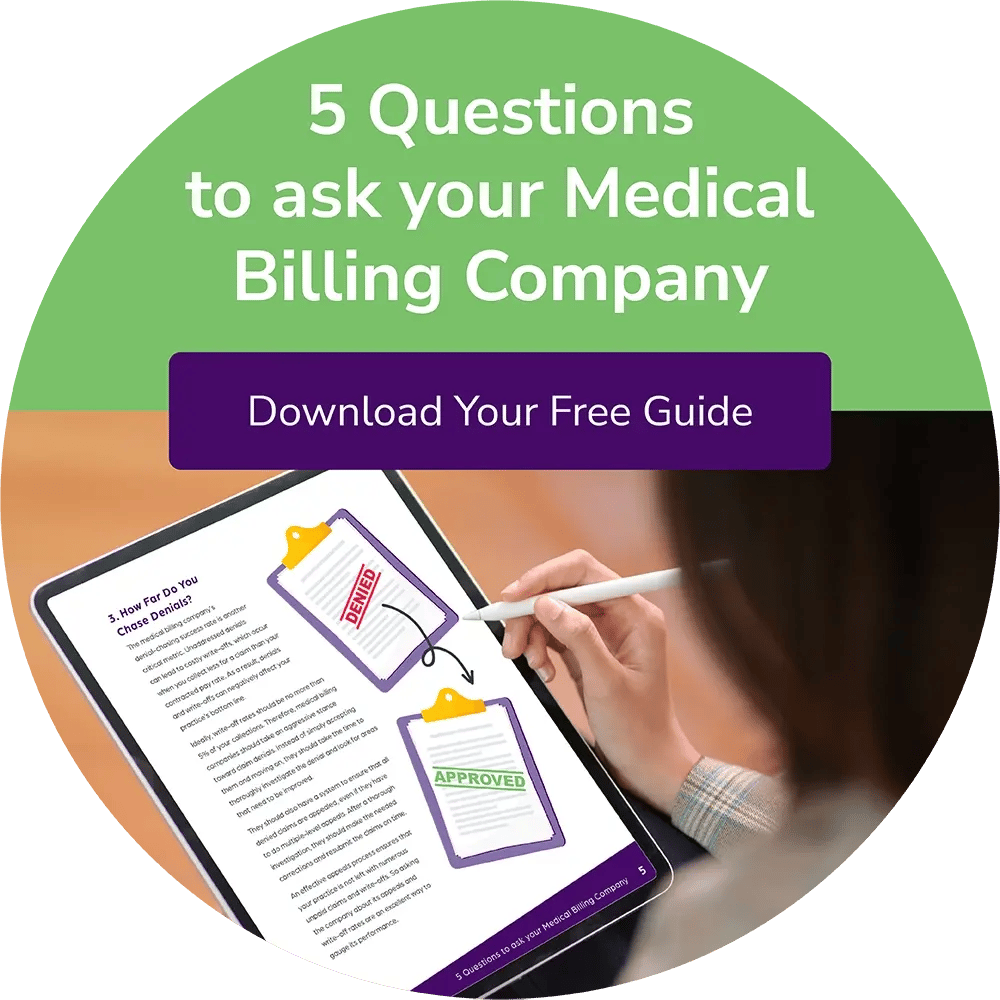10 Revenue Cycle Management Metrics & KPIs

In today's rapidly evolving healthcare landscape, managing the financial aspects of your practice has become more critical than ever. By effectively tracking and analyzing revenue cycle management metrics and key performance indicators (KPIs), you can optimize operational efficiency, enhance patient experiences, and ultimately decrease your bottom line.
However, knowing which metrics and KPIs to track can be confusing. In this comprehensive guide, you will learn the top 10 metrics you should monitor closely to ensure a healthy financial ecosystem.
10 Revenue Cycle Management Metrics & KPIs You Should Track
Knowing the right metrics and their impact on your bottom line can equip you with the necessary insights to make informed decisions and drive sustainable growth.
1. Days in Accounts Receivable (A/R)
Days in A/R measures the average number of days it takes for you to get paid after a patient visit. A high number could indicate slow payment processes or claims inefficiencies.
To optimize revenue, aim for lower days in A/R, which signifies a quick turnaround in claim payments.
2. Aged Accounts Receivable
Aged accounts receivable breaks down outstanding receivables into periods — usually 30, 60, 90, or 120 days. Analyzing aged A/R assists in identifying patterns, such as chronic late payers, which can be instrumental for revenue projection and strategic planning.
3. Claim Denial Rate
Your claim denial rate is the percentage of claims denied by payers. A high rate may indicate issues with insurance verification or coding accuracy. Keeping this rate low ensures healthy cash flow and minimizes rework.
4. First-Pass Claim Acceptance Rate
The first-pass claim acceptance rate — also known as the clean claim rate or first-pass resolution rate (FPRR) — reflects the percentage of claims paid on their first submission. A high rate indicates an effective claim submission process.
A high first-pass claim acceptance rate directly affects RCM by reducing the time and resources spent on resubmissions and denials management.
5. Cost to Collect
The cost to collect represents the expenses related to billing and collections efforts. Minimizing this cost through automation and efficient operations can significantly increase revenue and free up resources for other strategic initiatives.
6. Net Collection Rate
This is arguably one of the most important revenue cycle management metrics. It represents the percentage of potential revenue collected, accounting for write-offs and contractual adjustments.
A high net collection rate signifies that your practice is leaving less money on the table.
7. Claim Payment Velocity
Claim payment velocity measures the amount of time from claim submission to reimbursement. Faster claim payment improves cash flow, reduces the risk of unpaid services, and indicates efficient revenue cycle processes.
8. Bad Debt Write-Offs
Bad debt write-offs occur when patients fail to pay their financial responsibility toward a service received.
High levels of bad debt can erode profitability, strain resources, and even compromise your ability to provide patient care. Therefore, minimizing bad debt is a crucial aspect of successful RCM. You can do so through:
- Effective patient communication
- Comprehensive insurance verification
- Proper billing practices
- Robust collection efforts
9. Percentage of Accounts Receivable Beyond 120 Days
The Percentage of A/R Beyond 120 days measures the proportion of total money owed to your practice for services rendered that remains unpaid even after 120 days have passed since the date of service.
By the time a bill is 120 days old, collecting it can become significantly more challenging. A high percentage can indicate inefficiencies in the billing and collections processes or problems with specific payers. It may also cause cash flow issues as a large portion of your receivables is tied up in these uncollected bills.
10. Payer Mix
Payer mix refers to the distribution of your revenue from different payers, including:
- Medicare
- Medicaid
- Private insurance
- Self-pay
Each of these payer categories has its own unique set of regulations, reimbursement rates, and payment timelines, which significantly impact your practice's RCM and financial stability.
Understanding your payer mix allows you to anticipate changes in revenue and identify potential vulnerabilities in your revenue cycle. Your payer mix should be diverse so you are not depending on a single payer for a large portion of your revenue.
Improve Your Practice's Financial Health With a Trusted Medical Billing Company
Tracking and mastering the 10 revenue cycle management metrics and KPIs can revolutionize your practice's financial health. However, managing them can be an intricate task requiring profound expertise.
This is where PUREDI comes in. As a premier provider of medical billing software and services for medical practices across the United States, we are committed to helping you navigate the complex world of RCM. From billing to strategic financial consulting, we give you everything you need to boost your practice's financial health.
Contact us today to see how our wide variety of targeted solutions can transform your practice's financial performance.
Blog Post Tags
RCMGet Awesome Content Delivered Straight to Your Inbox!
Posts by topic
- RCM
- Medical Billing Software
- Outsource Your Medical Billing
- Compliance
- Physician Billing Services
- Denial Management
- AI
- Data Analytics
- EHR
- ERA
- reporting
- Automation
- Business
- Claim Scrubbing
- Coding
- Community
- Events
- LTPAC
- Medical Billing Companies
- Medicare
- Press Release
- Revenue Cycle Management
- business development
- clearinghouse See All See Less





